Flixweed
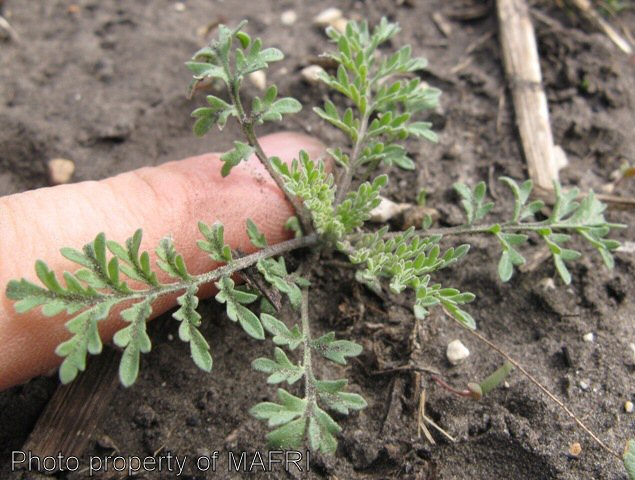 click to enlarge |
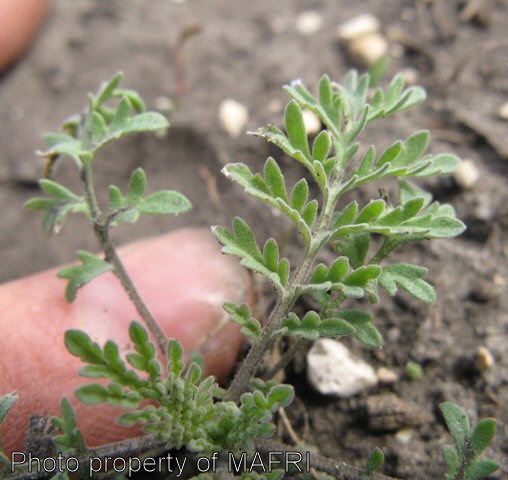 |
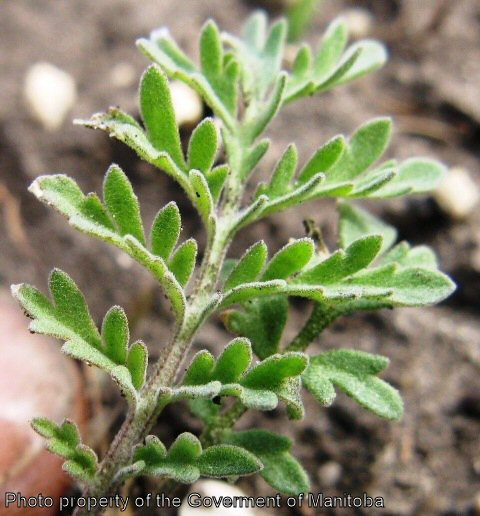 |
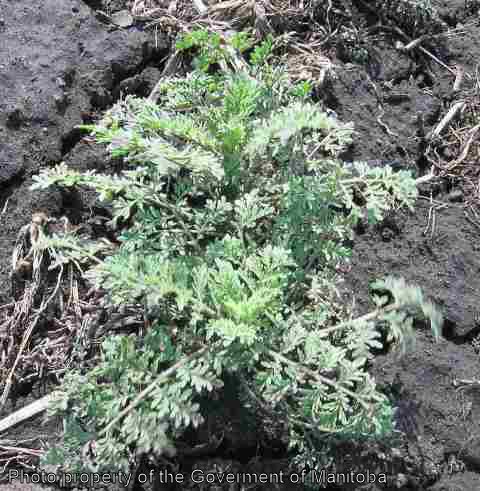 |
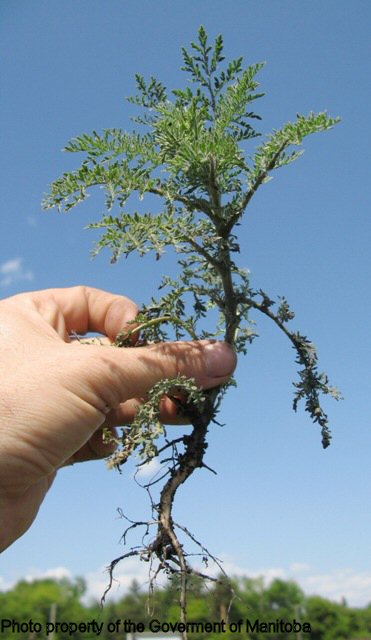 |
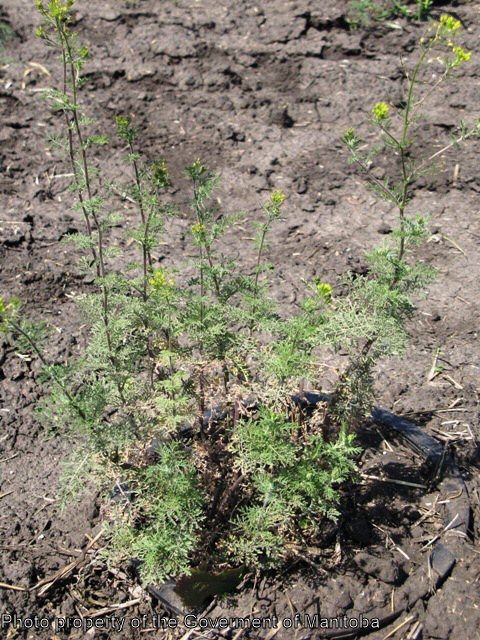 |
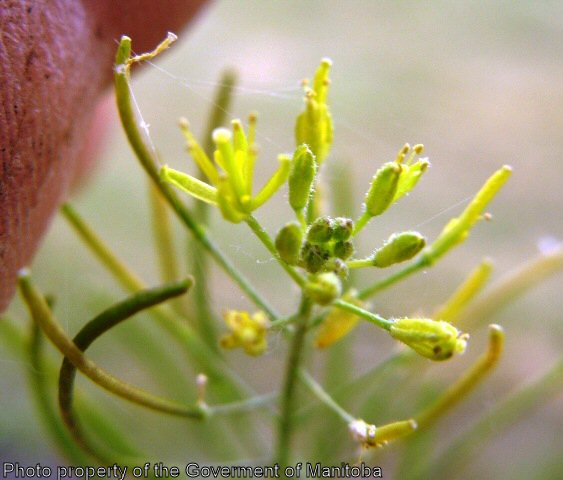 |
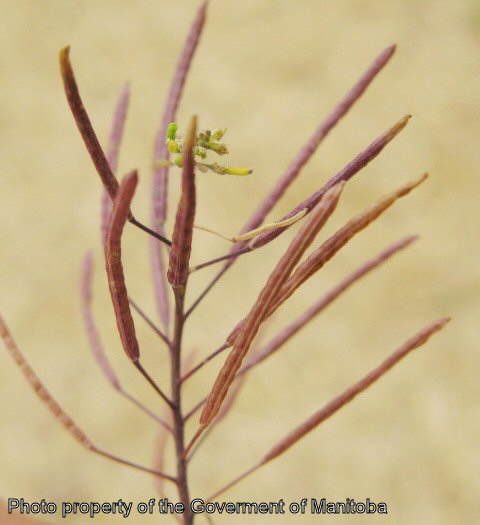 |
 |
Biology
This weed is an annual, winter annual or biennial, reproducing by seeds. The stems are erect, 0.3-1 m tall, highly branched with branched hairs, grey in colour because of the hairs. The leaves are alternate, petiolate, 2-10 cm long, very finely divided, greyish, and covered with fine hairs. The flowers are small pale yellow clusters at the ends of branches. The seeds are bright orange, 1 mm long, and contained in a silique 15-30 mm long. At maturity, the inflorescence makes up to ½ the total height of the plant.
This weed grows in gardens, roadsides, and anywhere the land has been cultivated or native vegetation destroyed. Winter annual biotypes are a particular problem in reduced tillage systems and winter annual crops such as winter wheat and dormant seeded canola. Flixweed is a vigorous plant and a prolific seed producer, enabling it to be highly competitive to desirable plant species. This weed is also an early spring food source for flea beetles.
Scouting Techniques
Take a minimum of 20 weed counts across the field. Inspect fields frequently in spring to locate infestations early.
Effects On Crop Quality
May reduce the yield of economically important plant species by competition. A source of impurity in cereal and forage seed.
Control Tips
- frequent spring cultivation
- Group 2 (Refine extra) control in wheat

